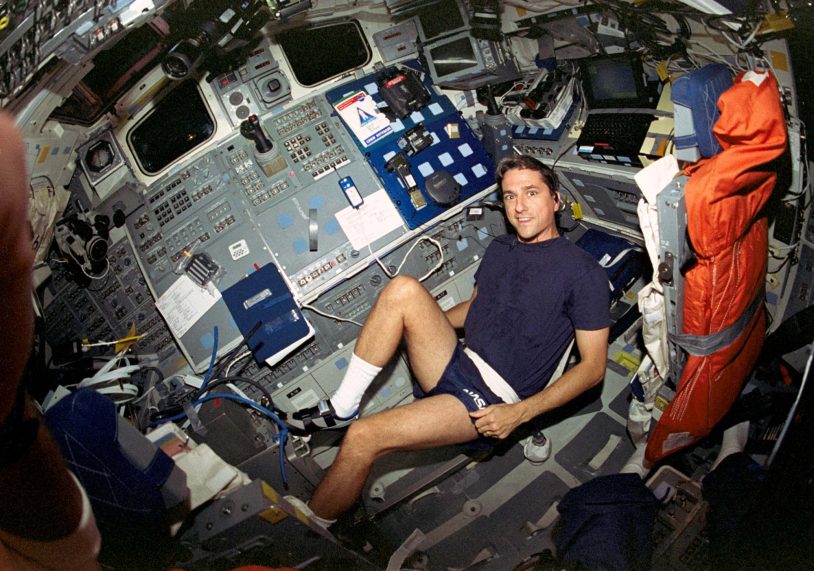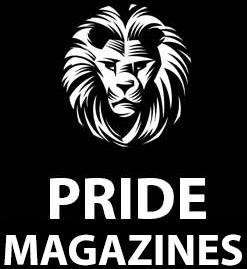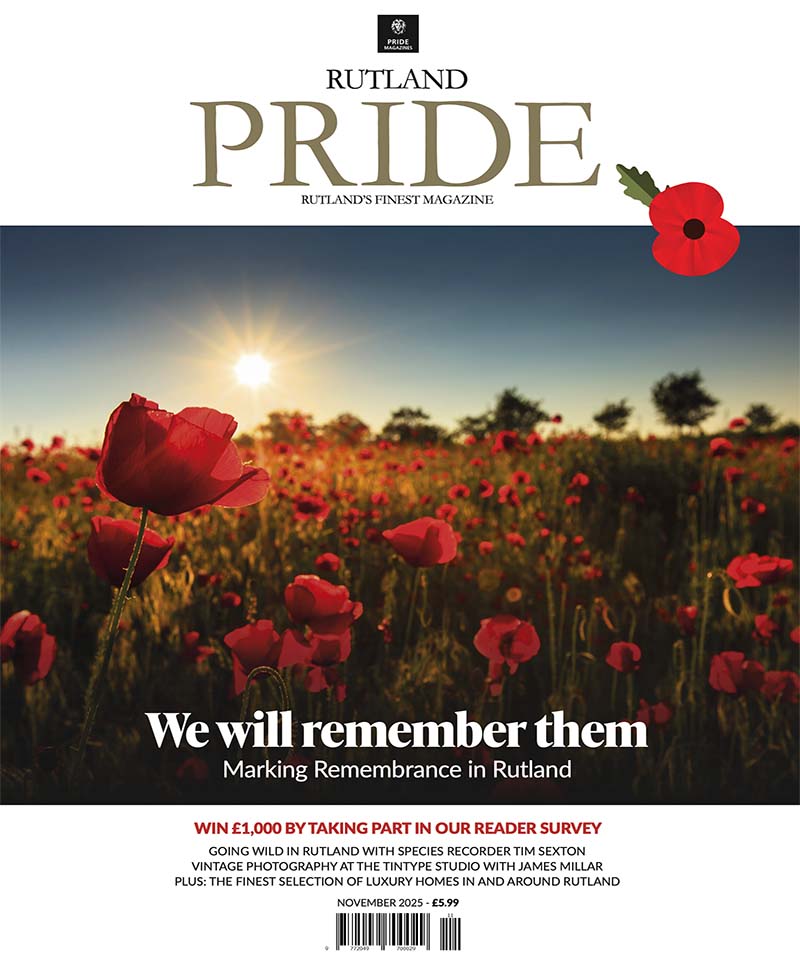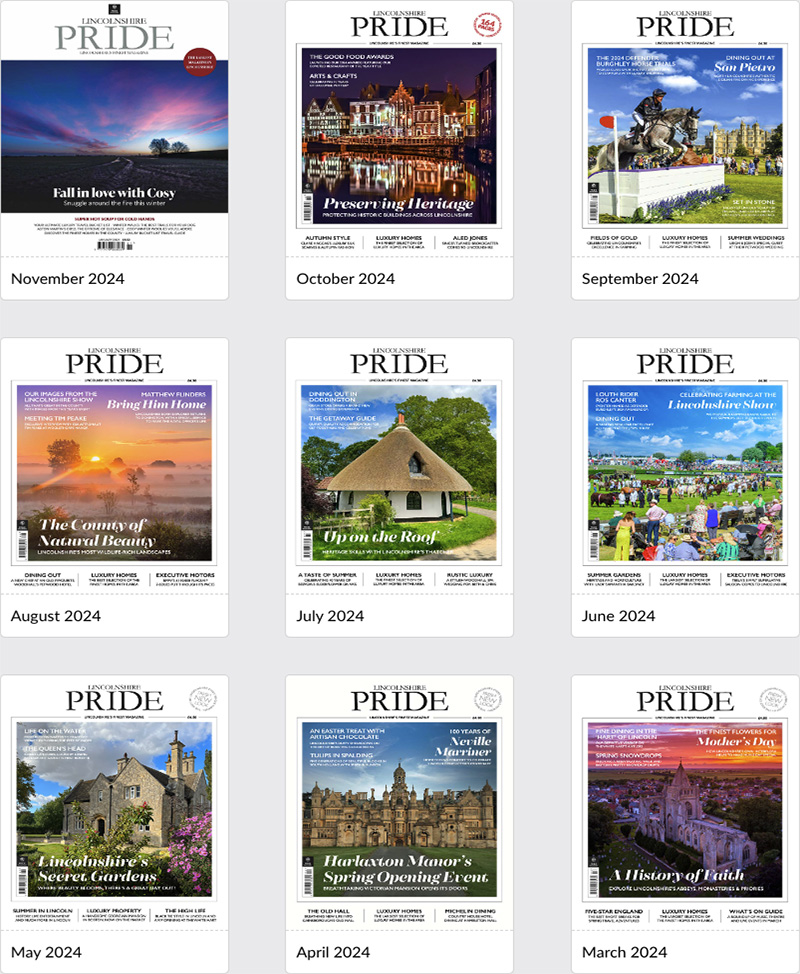
Meet Astronaut Don Thomas
This month in Leicester, a once in a lifetime opportunity to meet veteran astronaut of NASA’s Space Shuttle programme, Don Thomas
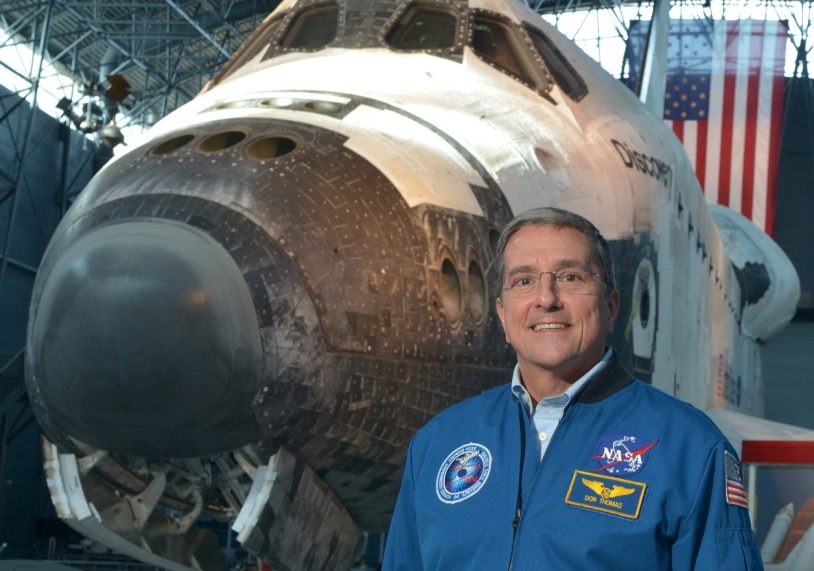
Don Thomas has travelled around the world. Literally around it: orbiting Earth 692 times. He’s travelled 17,600,000 miles, and has logged over 1,040 hours in space working as a NASA astronaut making four separate flights into space on two different Space Shuttle orbiters. He’s also been to Leicester, and he’s returning again this June for the third visit in his career to the city’s National Space Centre to spend a day meeting people who want to hear first hand about what it’s like to go into space.
“The visit is organised by Nick and Bryar Deakin, who founded a not-for-profit company, InspireSpace CIC Ltd (astronautevents.co.uk), which runs events and programmes to enable people to take an active role in Space and learn about the experience of space travel.”
STEM (Science, Technology, Engineering and Maths) subjects all feed into space exploration, making it a great potential source of inspiration for young people with its ability to encourage their interest in the subjects. It certainly worked for Don.
“I was six years old, growing up in Cleveland, Ohio,” says Don. “We were all ushered into the school hall one day to watch Alan Shepard become the second person and the first American to travel into space on the Mercury-Redstone 3 mission. It was my ambition from that moment to become an astronaut, and that really encouraged me to do well at school and to eventually work towards a doctorate in Materials Science at Cornell University.”
Don’s academic specialism was the conductive properties of materials in the field of electronics. Following his education, he worked for telecoms company AT&T Bell and for Lockheed. Never losing his ambition to pursue a career in the space industry, in 1987 Don relocated 1,600 miles to Houston, and a year later, joined NASA as a materials engineer.
It took four attempts to achieve selection as a NASA astronaut, obtaining his pilot’s license, then gaining a qualification in IFR (instrument) flying whilst working at the Lyndon B Johnson Space Center.
In January 1990 Don was selected by NASA to become an Astronaut Candidate, and officially became an astronaut in July 1991, then working in the safety, operations, payloads and CAPCOM branches of mission control, whilst being trained in each of the different aspects of Space Shuttle operation including how to fly – and how to land – one billion dollars worth of spacecraft.
Astronaut Candidates are assigned to a specific mission, usually 18 months to two years in advance, and they spend at least a year training for their specific role on that flight. Don was assigned to STS-65 which would see the Space Shuttle Columbia take off from Kennedy Space Centre on 8th July 1994.
Commanded by Robert Cabana and with Don serving as a mission specialist, overseeing the International Microgravity Laboratory (IML-2), it was the 17th flight that Columbia had performed out of a total of 28 missions (travelling a total of 125,000,000 miles and orbiting Earth 4,808 times) including STS-83 and STS-94 for which Don was also on board – he would also fly on Discovery, the most well-used of the five Space Shuttles on STS-70.
“The intervening time is spent studying and keeping fit,” says Don. “There’s not an adrenaline rush in the lead up to the flight because it’s a long build-up to the event and you’re used to working in the space industry, using simulators and being in that environment. It’s routine and it’s your career, so it’s more a sense of professional anticipation.”
“Saying goodbye to my wife, though, was tough. ‘See you in two weeks,’ is what we said, not countenancing the reality that something could go wrong. NASA allows you to spend time with your partner if they’ve been declared medically sound, but they don’t allow you to see your children as they’re considered a greater potential source of viruses or infections.”
“There are two shifts in the run up to a launch, and I was on the night shift, so I was already on site, and with lift-off scheduled for noon, we were inside the orbiter by around 10am.”
“30 seconds before lift-off, the on-board computers take over the launch sequence and ignite the three engines, one at a time, building to 90% thrust. At T-minus zero seconds, the explosive bolts holding the spacecraft release, the solid rocket boosters ignite and 2,000 tonnes of Space Shuttle starts to move upwards.”
“You’re 10% terrified and 90% excited, fairly insulated from the noise. But the amount of vibration is huge and with three times the force of gravity on you, the pressure on your chest is significant, making breathing more difficult.”
“Two minutes into the flight, at an altitude of about 28 miles, the solid rocket boosters (SRBs) detach and after eight and a half minutes, as you’re travelling at the speed of sound, the engines throttle back and then shut down. A couple of minutes later you’re in low orbit and suddenly everything is quiet and serene. There’s no time to process it though as the whole mission is subject to a flight plan, and without a second to contemplate where you are, my immediate task was to use a camera on board to photograph the large orange external fuel tank out of the window to check for any damage that may have occurred during lift-off.”
“Weightlessness isn’t gradual, it’s immediate when the engines are switched off. Being dry in a pool of water is a comparable sensation, but there’s drag in water, so eventually you come to a stop. There’s no drag in a weightless environment and some things are really easy, like moving objects around. Other (normally very simple) tasks become quite frustrating though, and on balance I’ve come to the conclusion that I quite like gravity!”
“The Space Shuttle is a very functional place to be: small, crowded but comfortable enough. 30 years ago we were able to exchange a text-based message or so each day with our loved ones back home, and we could make a ‘phone call’ about five minutes in duration (in public) via mission control halfway through the 15-day flight. Today there’s more unlimited access to the internet in space, so communication can be more regular.”
“I took a book with me, but there’s little to do but work and sleep on board. On the ISS you’re afforded more free time but during a mission two weeks in duration, we’re all worked hard to ensure your time can be as productive as possible.”
Perhaps mercifully, Don’s shuttle flights were after the Challenger disaster and before the loss of Columbia in 2003, so the crews on board his missions always regarded take-off as the most hazardous part of a shuttle mission, there was a sense of relief when it was over.
“The journey back to Earth is an incredible experience. For ten minutes as you’re re-entering the atmosphere the shuttle reaches over 1,000°c, and just four feet away from my head is a window, beyond which is a massive fireball of plasma with bright pink and orange colours streaking 20ft along the orbiter.”
Don would return to space on three more missions, and eventually retired from NASA in 2007. What do you do after a career like that, I wondered. “I really did come back down to Earth,” Don recalls. “When I landed it was to applause, as an American hero. Back home though, my wife told me in no uncertain terms that after two weeks of being away, it was my time to take out the trash and change our young son’s diapers.”
“I’ve found a new passion in life now, education. It’s an incredibly uplifting experience to share in people’s enthusiasm and to answer questions. People are always fascinated not necessarily by the technicalities of going to space, but with day-to-day life in space like how to eat and sleep. The most frequently asked question is always ‘how do you go to the toilet in space?’”
Does that make Don roll his eyes? “No! I’m thrilled to be asked every question, even the same question, every single time. I’m really privileged to be able to share my experience, and if I can inspire people, especially young people, to take an interest in STEM subjects and in space, I’m always happy to do so.”
“I’m looking forward to return to Leicester, where we’ve a ‘breakfast with an astronaut’ event planned, and opportunities to ask questions and generally discover more about space travel.”
“There’s a moment that you look out of the Space Shuttle window and see Earth, so far away. Suddenly you feel far away and so disconnected from home, which is emotional. But that also means that upon your return, you feel incredibly grateful for our precious planet and for the opportunity to be with the people you love.”
Don Thomas is appearing at Leicester’s National Space Centre, Exploration Drive, Leicester LE4 5NS, on Sunday 9th June. Tickets for the Centre’s Breakfast with an Astronaut and Q&A sessions are available at www.spacecentre.co.uk or by calling 0116 261 0261.
